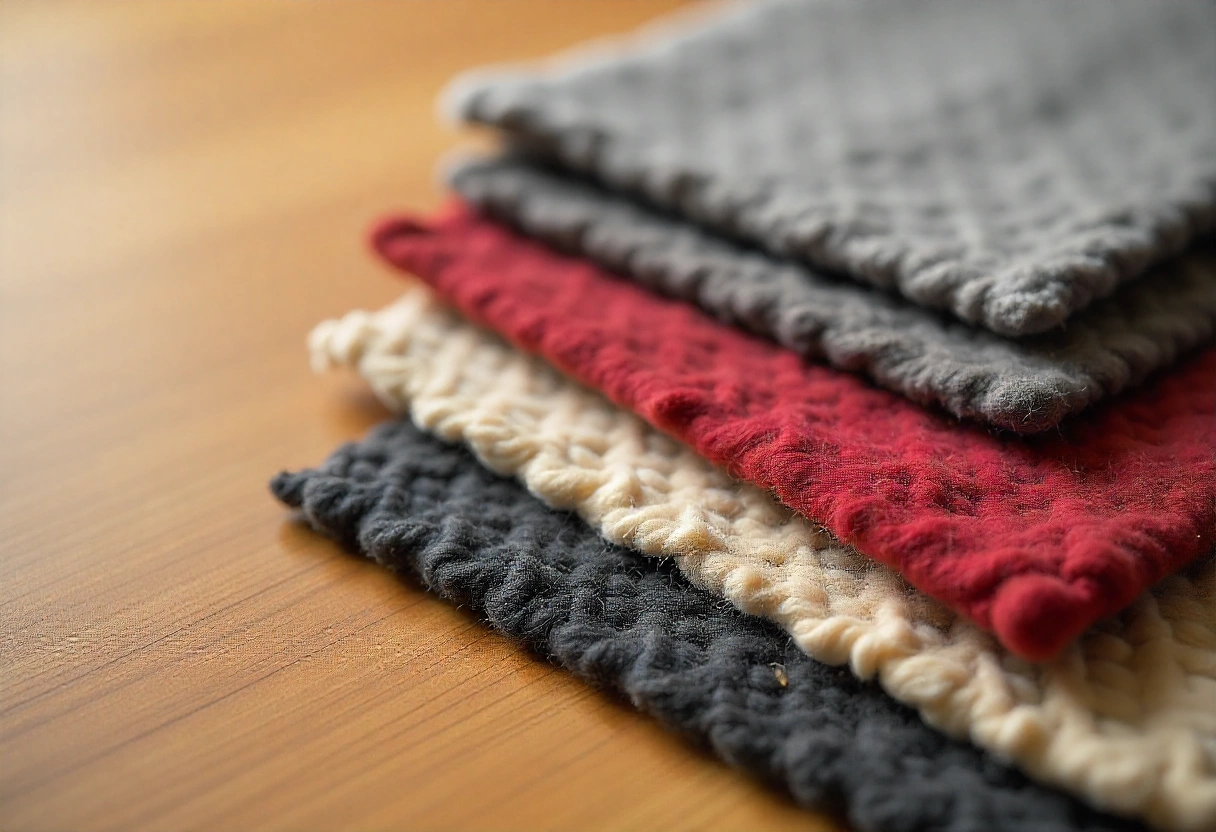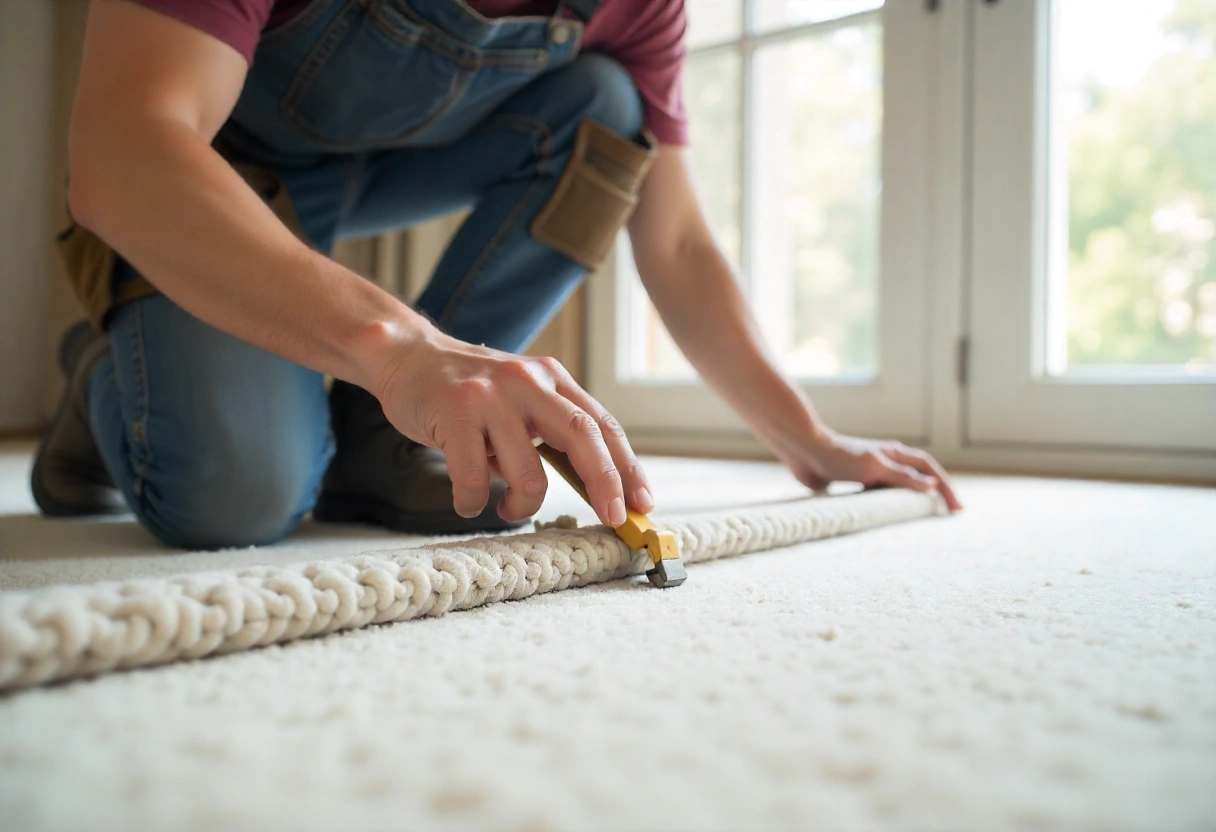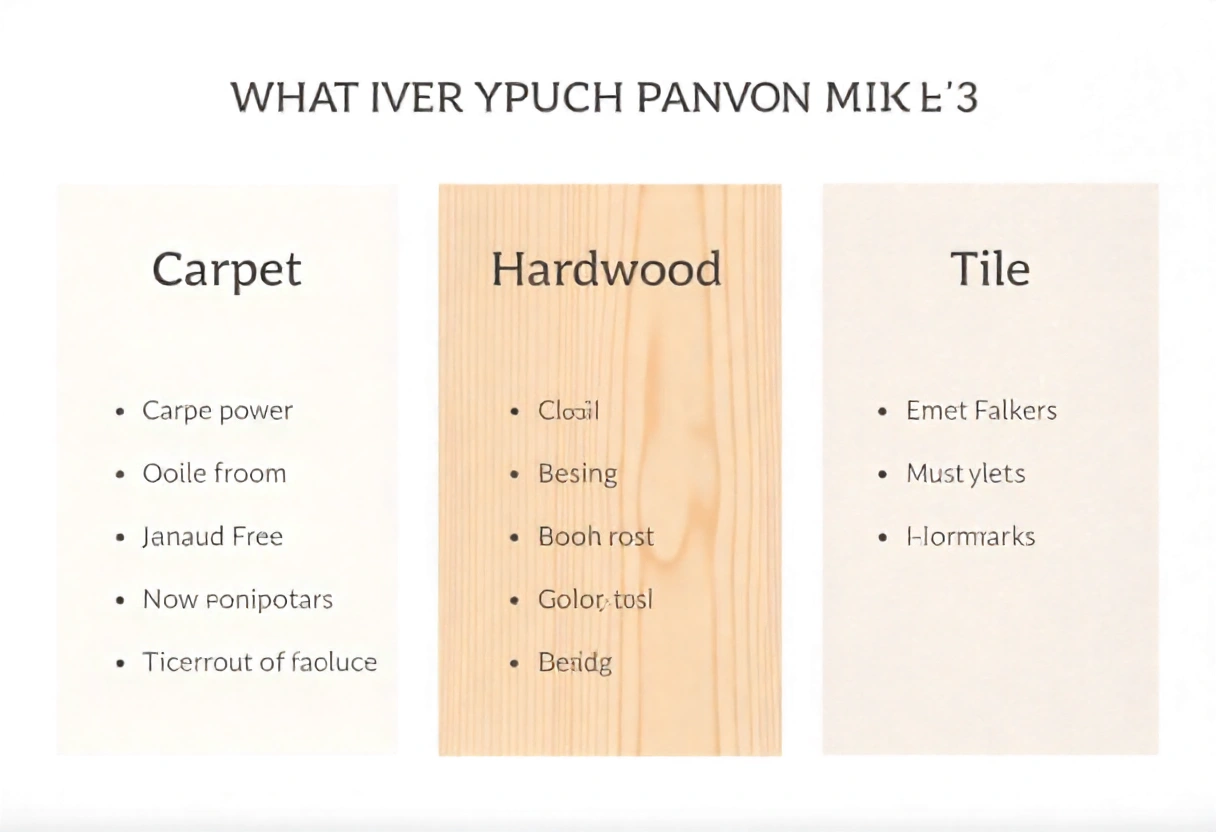Installing new carpet is one of the easiest ways to make your home look fresh, cozy, and comfortable. It can completely change how a room feels without spending too much money. On average, carpet installation costs between $3 and $11 per square foot, depending on the type of carpet, padding, and labor.
In this article, we’ll explain what affects the cost, compare it with other flooring options, and share a few simple tips to help you save money.
Average Carpet Installation Cost
Carpet installation usually costs $3–$11 per square foot.
This includes both materials and labor.
Here’s a quick breakdown of what you might spend on a medium-sized room:
| Room Size | Average Cost Range |
|---|---|
| 100 sq. ft | $300 – $1,100 |
| 200 sq. ft | $600 – $2,200 |
| 500 sq. ft | $1,500 – $5,500 |
So, carpeting a 12-by-12-foot room (144 sq. ft) would cost around $432 to $1,584, depending on your choices.
What Affects Carpet Installation Cost?
Several factors can affect the total cost of your project. The main ones include:
- Carpet material (nylon, polyester, wool, etc.)
- Padding type and thickness
- Labor costs
- Room shape and size
- Extra services like removing old carpet or moving furniture
Let’s look at each one in more detail.
1. Carpet Cost by Material

The type of carpet you choose makes the biggest difference in price. Some materials are cheap and easy to clean, while others are soft, natural, and luxurious.
| Material | Cost per Sq. Ft | Features |
|---|---|---|
| Polyester | $1–$3 | Soft, colorful, fade-resistant, and affordable |
| Olefin (Polypropylene) | $1–$3 | Budget-friendly, stain-resistant, but not very durable |
| Nylon | $2–$5 | Strong, durable, resists mold, and ideal for busy areas |
| Acrylic | $3–$8 | Hypoallergenic but less durable |
| Triexta | $3–$8 | Eco-friendly, stain-resistant, and durable |
| Sisal | $5–$15 | Natural fiber, great for high-traffic areas, but rough texture |
| Wool | $4–$20 | Soft, natural, long-lasting, but expensive and needs care |
If you want a budget option, go with nylon or polyester.
For a luxury feel, wool or sisal carpets are excellent choices.
2. Carpet Cost by Style
The style or “pile” of your carpet also affects cost and appearance. Pile means how the carpet fibers are cut or looped.
| Style | Cost per Sq. Ft | Description |
|---|---|---|
| Berber | $3–$20 | Loop-style, dense, and great for hallways |
| Cut Pile | $1–$12 | Smooth, soft, and easy to clean |
| Frieze | $1–$8 | Twisted fibers, hides dirt and footprints well |
| Patterned | $2–$6 | Decorative designs, stylish and durable |
| Saxony | $2–$8 | Plush, even surface, formal look |
| Textured | $1–$12 | Soft, durable, and great for family rooms |
| Cut and Loop | $1–$10 | Mixed textures for unique patterns |
If you have pets or kids, textured or frieze carpets are smart choices because they hide dirt and footprints easily.
3. Carpet Padding Cost
Carpet padding goes underneath your carpet. It adds comfort, helps with soundproofing, and extends the carpet’s life.
Padding costs $0.75–$2 per square foot on average.
Some carpets (like peel-and-stick tiles) already include padding.
Thicker isn’t always better — too much padding can make some carpets wear out faster. It’s best to use the type recommended by your carpet installer.
4. Labor Cost for Installation

Labor is a smaller part of the total cost, usually around $0.50–$1 per square foot.
However, prices can go up if your room has stairs, curves, or complex shapes.
If you’re replacing old carpet, the installer might charge extra for removal and disposal, usually $2–$3 per square foot.
5. Cost by Room Size and Shape
The larger or more complicated the room, the higher the total cost.
- Simple rooms (like bedrooms or living rooms) are cheaper.
- Odd-shaped rooms or stairs take more time and effort, raising labor costs.
Some waste is normal because carpet comes in large rolls that may need trimming.
6. Extra Costs to Consider
When planning a carpet project, remember these possible extra costs:
| Item | Average Cost | Description |
|---|---|---|
| Old carpet removal | $2–$3 per sq. ft | Taking out and disposing of old carpet |
| Subfloor repair | $3–$10 per sq. ft | Fixing water damage or uneven flooring |
| Moving furniture | $50–$100 | For large or heavy items |
| Stain-resistant treatment | Around $80 per 1,000 sq. ft | Protects carpet from spills and stains |
You can save a lot by doing some of these tasks yourself, like moving furniture or removing the old carpet.
How Carpet Compares to Other Flooring

Carpet is one of the most affordable flooring options you can choose. Here’s how it stacks up against other materials for a 200 sq. ft room:
| Flooring Type | Average Total Cost |
|---|---|
| Carpet | $750 |
| Vinyl Sheet | $2,180 |
| Hardwood | $3,530 |
| Ceramic Tile | $5,800 |
If your goal is to update your home on a budget, carpet gives you the best value for comfort and appearance.
Signs You Should Replace Your Carpet
Sometimes, carpet replacement isn’t just about looks — it’s about health and comfort. You might need new carpet if you notice:
- Rips or visible wear and tear
- Bad odors or stains that won’t go away
- Thinning or uneven padding
- Increased allergy symptoms
- Water damage or mold growth
- Carpet older than 10–15 years
Replacing old carpet can make your home look newer and smell fresher, and it may even improve air quality.
Benefits of Installing New Carpet
Upgrading your carpet has many benefits beyond just appearance:
- Makes rooms warmer and cozier
- Adds comfort underfoot
- Reduces noise and echoes
- Improves safety by reducing slips
- Helps regulate room temperature
- Increases home value with modern design
It’s an easy way to give your home a makeover without a full renovation.
DIY vs. Professional Installation
You might be wondering — can I install carpet myself?
Here’s the truth:
- Small projects like carpet tiles or small rooms can be DIY-friendly.
- But large areas or stairs are best handled by professionals.
Installing carpet requires special tools like a carpet stretcher and seam roller. If it’s not installed tightly, it can wrinkle or come loose — and that could even void your warranty.
Since labor costs are fairly low, it’s usually smarter to hire a professional installer to make sure your carpet looks great and lasts longer.
How to Save Money on Carpet Installation
Even if you hire professionals, there are several simple ways to reduce your total cost:
- Move your own furniture before installers arrive.
- Remove old carpet and padding yourself if possible.
- Get multiple quotes from local installers to compare prices.
- Choose durable carpet styles that last longer.
- Invest in good padding — it protects your carpet and saves money over time.
- Shop during sales or clearance events to find better deals.
A little preparation can easily save you hundreds of dollars on your project.
Final Thoughts
Carpet remains one of the best ways to add comfort, warmth, and beauty to your home without breaking your budget.
The total carpet installation cost will depend on the material, style, padding, and room size, but most homeowners spend between $3 and $11 per square foot.
If you plan carefully, move your own furniture, and choose the right material, you can keep your project affordable while still getting a stylish, long-lasting result.
Whether you prefer a soft wool carpet for luxury or a durable nylon for busy rooms, a new carpet can instantly refresh your home and make it feel more inviting.
